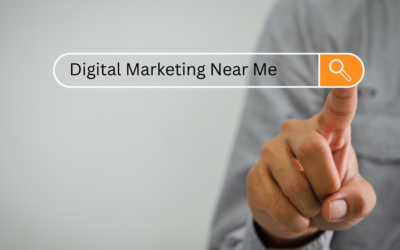In the ever-changing world of digital marketing, staying on top of the latest trends and strategies is vital. Email marketing remains a powerful tool for brand marketers, offering direct communication to consumers and audiences. At MILE Social, we recognize the enduring effectiveness of email marketing, but we also understand that consumer expectations and the email landscape are evolving. In this article, we’ll explore the current state of email marketing, the increasing importance of personalization, and how emerging technologies like AI can elevate your email strategy. Continue reading to understand the evolving landscape of email marketing for 2024.
The Current State of Email Marketing
In an age where consumers are inundated with emails, standing out in the inbox has become a daunting challenge. According to eMarketer’s Industry KPIs, during the first half of 2023, over 10.5 billion marketing emails were sent worldwide, with an open rate of approximately 25% but a conversion rate of just 0.07%. The rise of email automation, driven partly by the shift to e-commerce during the pandemic, has contributed to both the volume of emails and decreased conversion rates.
Consumers today are selective about the emails they engage with, often ignoring or deleting brand emails that fail to offer real value. An Airship survey by Sapio Research found that 34% of US internet users ignore or delete brand emails without reading them, while another 33% don’t even bother opening them. With email marketing ad spend on the rise, it’s clear that despite the challenges, email marketing remains a critical channel for marketers.
Why B2B and B2C Marketers Rely on Email
Email marketing is indispensable for both B2B and B2C marketers. It provides a reliable, controllable, and direct means of communication. A study by SeQuel Response and ISG revealed that between April 2022 and April 2023, 62% of US B2B and B2C marketers increased their email marketing budget.
For B2C marketers, email is essential for transactional communication, such as order confirmations and shipping alerts. It’s also highly effective for delivering promotional offers, with 51% of US digital shoppers preferring to receive discount offers via email, according to MessageGears.
B2B marketers rely on email for pre- and post-sale communication, managing client relationships, and achieving top-of-funnel goals. However, as B2B buyers become younger and more digital-savvy, they demand more relevant and valuable content in their emails.
The Importance of Personalization and Segmentation
Today’s consumers expect more than superficial personalization in their emails. They want messages tailored to their needs, delivered at the right time, and communicated with an authentic brand voice. According to a report by Ascend2, 65% of marketers worldwide believe personalized emails have the most significant impact.
Brands increasingly use customer data to create relevant and personalized email marketing promotions. Targeted promotions have become a necessity, not only for enhancing customer loyalty but also for avoiding the erosion of brand trust and wastage of promotional resources.
To achieve “true” personalization, brands must invest in data collection, adopt agile processes, and leverage automation to send emails faster. MILE Social recognizes the importance of personalization and can assist brands in implementing effective strategies that go beyond basic personalization.
Embracing New Email Marketing Tactics
While personalization is crucial, it’s not the only factor that matters in email marketing. Customer experience (CX), relevancy, privacy protection, and measurement are equally important components of a successful email strategy.
Ensuring that emails are mobile-friendly is essential, given the increasing use of smartphones for email access. A mobile-optimized design is crucial for preserving CX and encouraging recipient action.
Artificial Intelligence (AI) is also making its mark in email marketing, doubling its usage between 2022 and 2023. AI can assist with personalization, re-engagement strategies, and maintaining email list health. However, it’s essential to use AI responsibly and ensure data security. Learn more about AI automation services in New Jersey.
The Changing Landscape of Email Marketing Measurement
Measuring email performance and return on investment (ROI) can be challenging for marketers. Factors like Apple’s Mail Privacy Protection make ROI measurement more complex by removing tracking parameters from URLs, potentially impacting personalization efforts.
At MILE Social, we understand the importance of accurate measurement in email marketing and can help you navigate the changing landscape to ensure that you have the insights you need to optimize your email campaigns effectively. Email marketing continues to be a valuable tool for brand marketers, but it’s evolving rapidly. To stay competitive and succeed in this dynamic landscape, brands must embrace personalization, adopt new tactics, and leverage technologies like AI responsibly. MILE Social is here to assist businesses in crafting effective email marketing strategies that resonate with today’s consumers and deliver tangible results.


